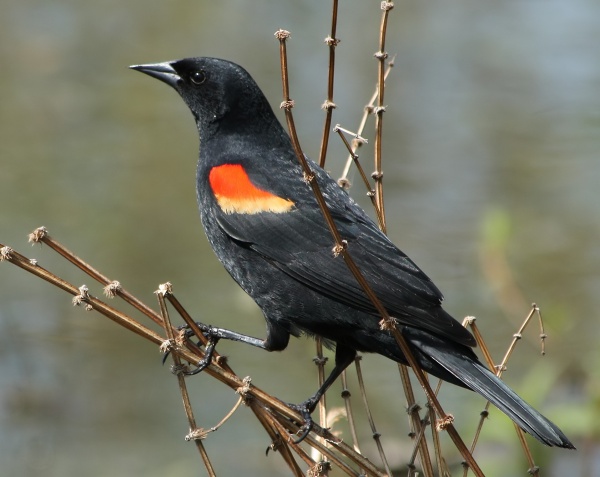Facts About Red-winged blackbird
The red-winged blackbird, a member of the Icteridae family, is a familiar sight across North America and parts of Central America. These birds range from Alaska to Florida and can also be found in Mexico and Guatemala. Additionally, isolated populations exist in El Salvador, Honduras, and Costa Rica. Typically, they migrate south for the winter, though some hardy individuals remain as far north as Pennsylvania and British Columbia. With a peak population exceeding 250 million breeding pairs, red-winged blackbirds are among the most abundant land birds in North America and are also some of the most extensively studied wild bird species worldwide.
These birds are easily identifiable due to the sexual dimorphism in their appearance. Males are black with striking red shoulder patches and yellow wing bars, while females possess a more subdued dark brown coloration. Their diet mainly consists of seeds and insects. The red-winged blackbird belongs to the genus Agelaius, meaning "belonging to a flock" in Greek. Its species name, phoeniceus, means "deep red" in Latin. There are several subspecies, each exhibiting slight variations in appearance and distribution.
The males' vivid red shoulder patches are particularly eye-catching, especially during flight or courtship displays. Males are generally larger and heavier than females. Both sexes have a sharply pointed bill, a medium-length tail, and black eyes, bill, and feet. They molt their feathers from late August to early October, which prepares them for migration.
Red-winged blackbirds are highly territorial, particularly during the breeding season. They prefer wetlands but can also inhabit meadows, agricultural fields, and other upland areas. In winter, they form large roosts, often mingling with other bird species. These birds are polygynous, with males defending territories that can accommodate up to 10 females. Females are responsible for nest building and egg incubation. Due to common nest predation, they have developed various strategies for nest protection, such as group nesting and using alarm calls.
They face several natural predators, including raccoons, minks, hawks, and snakes. They are also susceptible to brood parasitism by brown-headed cowbirds. Despite these challenges, red-winged blackbirds remain plentiful due to their adaptive behaviors and diverse habitats.
In winter, they migrate south, with females typically traveling farther than males. While some populations remain in milder climates, others follow varying migration patterns. These birds significantly impact their ecosystems and local economies. They help control insect populations and disperse weed seeds, but they can also cause considerable damage to crops like corn and sunflower.
Various methods have been employed to manage their population and mitigate crop damage, including chemical deterrents, mechanical devices, and habitat management. Despite these efforts, red-winged blackbirds remain widespread and are protected under the Migratory Bird Treaty Act of 1918.
The relationship between red-winged blackbirds and humans is complex. While they are valued for their ecological benefits, they also pose challenges for farmers due to their impact on crops. Conservation efforts aim to balance these factors while ensuring the species continues to thrive.

 United States
United States